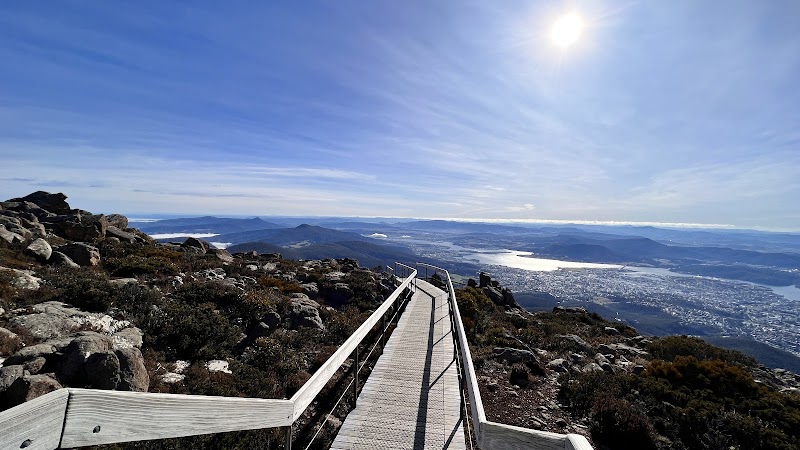Explore The Best Walking Tours Near Hobart For Outdoor Adventure
Explore some of the best walking tours near Hobart that blend challenge, beauty, and practicality. From scenic hilltop circuits to gentle urban-adjacent routes, discover practical advice for hiking the diverse landscapes surrounding Tasmania’s capital.
Start Early to Avoid Afternoon Winds
Begin your walk in the early morning when the winds are calmest, especially on exposed routes like Mount Wellington.
Bring Adequate Water
Hydration is critical as natural water sources along the trails are limited or unreliable; carry at least 2 liters per person.
Wear Sturdy Footwear
Choose hiking boots with good grip to handle both rocky ascents and muddy forest floors encountered on diverse trails.
Check Weather Forecasts
Tasmania’s weather can shift quickly — carrying layers and rain gear prepares you for sudden temperature drops or showers.
Explore The Best Walking Tours Near Hobart For Outdoor Adventure
Discover Walking Tours Near Hobart: Your Gateway to Tasmania's Wild Edge
Hobart offers an approachable yet thrilling launchpad for walking tours that tap directly into the region’s raw beauty. Whether you’re pacing quiet urban trails or ascending rugged hilltops, walking tours near Hobart provide direct contact with landscapes fiercely alive—forest floors crackling underfoot, winds that dare you onward, and views that stretch beyond the everyday.
Among the standout options is the Mount Wellington Circuit, a 21 km loop challenging but accessible, with an elevation gain of about 700 meters. The terrain shifts from paved paths to rocky tracks, weaving through hardy eucalypts and open viewpoints where Hobart’s skyline meshes with the distant Derwent River. The wind up here isn’t just a breeze; it’s an active player, pushing and pulling as you make progress.
Planning these walking tours requires preparation: hydration is vital since water sources are scarce beyond urban edges, and footwear should grip both damp earth and jagged stone. Early starts help avoid afternoon gusts and reveal the landscape in cool morning light.
Hobart’s walking tours keywords include "walking tour near Hobart," "Hobart hiking trails," "Mount Wellington walking tours," and "Tasmanian outdoor adventures." These searches reflect visitors seeking immersive day treks with a blend of natural challenge and cultural encounters.
Beyond Mount Wellington, the South Hobart Rivulet Track offers gentler terrain—a 5 km route threading through local bushland, curved creek beds daring adventure seekers to pause and listen. This path suits casual hikers craving fresh air and birdcalls without steep climbs.
Each walk invites interaction with a landscape behaving fiercely itself, never passive. For travelers eager to plan an outdoor excursion that balances adventure with practicality, Hobart’s walking tours promise a compelling blend of kinetic energy and contemplative immersion.
Nearby Trips & Excursions to Book
- Tasman Peninsula Day Trip: Historic sites and coastal walks.
- Bruny Island Wilderness Walks: Pristine beaches and native wildlife encounters.
- Kayak Tours on the Derwent River: Waterborn exploration paired with stunning vistas.
- Mount Field National Park Hiking Adventures: Alpine trails weaving through towering forests.
Embark on these adventures to complement your walking tour experience with outdoor activities that further uncover the region’s depth and dramatic charm.
Nearby Trips
All Adventures
Boat Charters
Water Activities
Adventures near Hobart
Discover the unique and memorable adventures that make Hobart special.
Frequently Asked Questions
Are walking tours near Hobart suitable for beginners?
Yes, many walking tours near Hobart offer options for varying skill levels, from easy riverside paths to more demanding ridge climbs like Mount Wellington. Beginners should choose trails with gentler elevation profiles and well-marked routes.
What wildlife might I encounter on these trails?
Common sightings include the endemic Tasmanian pademelon, wedge-tailed eagles soaring overhead, and occasionally the shy platypus near creeks. Early mornings improve wildlife spotting chances.
Are dogs allowed on walking trails near Hobart?
Policies vary by trail; some paths like those in Mount Wellington National Park restrict dogs to protect local wildlife, so it’s best to check specific trail regulations before bringing your pet.
Is public transport available to trailheads?
Public transport access is limited outside the urban center. Renting a car or booking organized tours offers more flexibility to reach popular trailheads.
What cultural experiences accompany the walking tours?
Several routes intersect sites of Aboriginal cultural heritage and early colonial history, with interpretive signs explaining connections to local communities and their relationship with the land.
How can I minimize my environmental impact on these walks?
Stay on marked trails, pack out all waste, respect wildlife without disturbing habitats, and avoid feeding animals to preserve the area's natural balance.
Recommended Gear
Hiking Boots
Provides stability and traction on varied terrain including rocky paths and damp forest floors.
Water Bottle (2 liters)
Staying hydrated is essential especially during warmer months when natural water sources are scarce.
Layered Clothing
Enables quick adjustments to temperature changes and sudden weather shifts common to Tasmanian hills.
Daypack with Rain Jacket
Carry essentials and protection from rain or wind, especially important in exposed highland sections.
Local Insights
Hidden Gems
- "The Devil's Throne, an overlooked lookout on Mount Wellington with fewer visitors but outstanding views."
- "Fern Tree Gully, a shaded section rich in mosses and native ferns rarely seen on main pathways."
Wildlife
- "Tasmanian pademelon"
- "wedge-tailed eagle"
- "platypus"
- "Tasmanian devil (rare)"
History
"Many trails trace pathways used by the Mouheneener people, Hobart’s original custodians, with some routes following early convict roads dating back to the 19th century."
